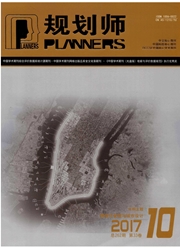

 中文摘要:
中文摘要:
旅游功能区(接待区)隶属于大城市边缘的大中型旅游(风景)区。研究得出了旅游功能区(接待区)控制性规划的重点内容(包括保护与开发的关系、整体与局部的关系和与管理体系的对接),探讨了其多种定性与定量相结合的研究方法。广州市帽峰山森林公园入口接待区控制性规划,从遵从上位规划和保护生态环境的立足点出发.利用重点要素“空间叠合分析法”细分接待区的开发与保护区;再与周边旅游(风景)区(白云山、南湖)做比较分析,预测客源市场、旅游容量和服务设旋类型:制定各类各级区划与政策指引,以期更好地实施规划。
 英文摘要:
英文摘要:
The key points of regulatory detailed planning for specific functional zone in tourism area in urban fringe, which conclude the relation between environmental protection and development, the relation between part and whole, and how to connect planning products and urban management system. Different qualitative and quantitative methods are also suggested in the paper. Taken the hospitality zone of Maofengshan forest park of Guangzhou city as a case, based on the mater plan and the principles of environmental protection, the paper subdivides protection and development zones by overlapping main spatial factors. Compared with the other tourism areas (Baiyunshan and Nanhu) in urban fringe, the paper analyzes tourist origins and markets, predict tourist volume and types of service facilities. In order to connect with urban management system, the paper suggests mapping and zoning of different policies and guidelines.
 关于袁媛:
关于袁媛:
 同期刊论文项目
同期刊论文项目
 同项目期刊论文
同项目期刊论文
 期刊信息
期刊信息
